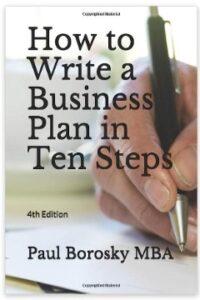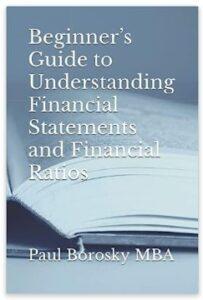How to Write a Clothing Boutique Business Plan or Template
The clothing boutique industry remains an enduring and captivating business concept, renowned for its ability to cater to specific demographics and offer high-end fashion products that capture the imagination of consumers.
As the demand for clothing boutiques continues to surge, the importance of well-structured clothing boutique business plans, templates, and pro forma financial projections has never been greater. Whether specializing in women's clothing, baby apparel, or other unique niches, these small businesses thrive and stand their ground against formidable big-box competitors. Recognizing the growth and popularity of clothing boutiques, our dedicated business plan writer has delved into the realm of essential tips and tricks for clothing boutique owners aspiring to create a comprehensive and effective business plan.
From articulating the boutique's unique selling proposition to projecting meticulous financial statements, our expert guidance empowers clothing boutique entrepreneurs to define their vision and navigate the fiercely competitive landscape. With these invaluable insights, aspiring boutique owners can confidently position themselves for success in this dynamic and ever-evolving industry. Whether you're an established boutique seeking expansion or a passionate entrepreneur embarking on a new venture, mastering the art of crafting a well-structured business plan can be the key to unlocking your boutique's full potential. Watch the video link above to learn more and embark on your journey toward a thriving clothing boutique business (7/23).
CLICK HERE for a Clothing Boutique Business Plan Template.
Executive Summary for a Clothing Boutique Business Plan or Template.
The Executive Summary of a Clothing Boutique Business Plan or Template follows the conventional structure of an executive summary, presenting critical details like the company name, legal structure (e.g., limited liability partnership or corporation), and competitive advantages in the market. However, the emphasis on identifying and describing the company's specialization sets a clothing boutique business plan apart.
Clothing boutiques thrive by catering to specific demographics and offering distinctive fashion choices. Therefore, clearly stating the boutique's specialization in the executive summary is vital. Whether the boutique focuses on high-end baby clothing and supplies or provides top-of-the-line surfwear, the executive summary should highlight this unique aspect and explain its relevance to the local market. By articulating the boutique's specialization, the executive summary creates a distinct brand identity and effectively communicates the business's value proposition to potential investors and stakeholders. Demonstrating a keen understanding of the niche market and its demand, the clothing boutique business plan showcases its potential for success, setting the stage for further exploration of the detailed plan.
Incorporating this essential information into the Executive Summary, the clothing boutique business plan captures readers' attention and compels them to delve into the comprehensive details of the plan. Doing so inspires confidence in the boutique's vision and prospects for long-term success.
Company Information and Location.
The Company Information and Location section in a clothing boutique business plan is a crucial component that provides a comprehensive and enticing overview of the venture. It begins by introducing the boutique, specifying the specialization in clothing, whether menswear, women's fashion, or other niches. The section highlights the boutique's unique selling proposition (USP), emphasizing what differentiates it from competitors. Additionally, it identifies the target market and its characteristics, outlining the boutique's appeal to specific demographics or lifestyle preferences. The location strategy is explained, delving into the reasons for choosing a particular area based on foot traffic, demographics, and competition. A clear description of the business structure, whether sole proprietorship, partnership, LLC, or corporation, is presented. Furthermore, a compelling mission and vision statement showcases the long-term goals of the boutique. The section incorporates key features like exclusive designer collaborations or personalized services backed by relevant market research and competitive analysis. If applicable, future expansion plans are briefly mentioned. A well-written Company Information and Location section sets the stage for the business plan, captivating potential investors and stakeholders with the boutique's unique proposition and growth potential.
Need Help Writing a Clothing Boutique Business Plan?
Call or Text Paul, Doctoral Candidate, MBA.
321-948-9588
Email: Paulb@QualityBusinessPlan.com
Hours of Operation: Monday through Friday, 8 am to 9 pm EST.
Our business plan writer is located in Orlando, FL.
CLICK HERE to Contact Us Today!!!
Service Description and Competitive Advantages
The Service Description and Competitive Advantages section of a clothing boutique business plan is vital in outlining its unique offerings and setting it apart in the competitive market. To begin, identify specific categories for the product offerings. Whether it's high-end womenswear or trendy menswear, clearly define the product segments such as dresses, blouses, pants, accessories, and more. This comprehensive list showcases the boutique's breadth and diverse range of fashionable products, appealing to a broader customer base.
Moving forward, provide specific examples of clothing items or brand names that will be carried under each category. By offering concrete examples, the business plan demonstrates the boutique's attention to detail and dedication to curating a fashionable and diverse collection for its customers. Emphasize the boutique's distinctive product lines and exclusive brand collaborations to highlight its competitive advantage. This approach showcases the boutique's unique offering and sets it apart from competitors in the market. Moreover, it underscores the boutique's commitment to providing customers with exclusive and high-quality apparel, enhancing its appeal to discerning fashion enthusiasts.
By following this structured and compelling approach, the clothing boutique business plan effectively communicates the breadth and depth of its product offerings, emphasizing its competitive advantage in the market. This information provides potential investors and stakeholders with a clear understanding of the boutique's value proposition, positioning the business for success in the highly competitive world of fashion retailing.
Target Market for a Clothing Boutique Business Plan Template.

The specific products determine the Target Market for a Clothing Boutique Business Plan Template and the boutique's services. The boutique's product offerings are crucial in defining the target market's characteristics.
For instance, if the boutique specializes in men's clothing, the target market may encompass men between 18 and 40. Understanding this demographic's preferences and shopping habits helps the boutique tailor its products and marketing strategies accordingly. On the other hand, a boutique catering to baby clothing and accessories will focus its target market on parents or grandparents seeking stylish and comfortable apparel for infants and toddlers. Understanding the needs and preferences of this demographic allows the boutique to provide a curated collection that appeals to parents and caregivers.
Moreover, clothing boutique business plan ideas can be adapted for similar business structures, such as surf shops or tourist clothing stores. These entities also offer clothing as a primary revenue generator, often including complementary products like sunglasses or souvenirs. When implementing differentiated boutique strategies, considering the location and potential visitor demographics becomes crucial in defining the target market.
By aligning the target market with the boutique's unique product offerings and taking into account location and customer preferences, the clothing boutique business plan template can effectively guide business owners in tailoring their marketing efforts and product assortment to meet the needs of their specific target audience. This targeted approach enhances the boutique's appeal and establishes a strong foundation for success in the competitive retail market.
Industry Research for a Clothing Boutique Business Plan
The Industry Research section of a clothing boutique business plan begins with a comprehensive national review of the clothing boutique industry, documenting key industry statistics. For instance, research from reputable sources like IBIS World revealed that clothing boutiques in the US have generated approximately $18 billion in revenue. Understanding these industry-wide figures provides valuable insights into the size and potential of the market.
Additionally, analyzing the average profit margin of industry competitors, which stands at approximately 3.9% annually, offers essential financial context for boutique business owners to benchmark their performance and profitability targets. Beyond industry statistics, the research identifies leading brand names for the boutique's target products. Exploring popular brands enhances the boutique's understanding of consumer preferences and helps align the product assortment with market trends.
Moreover, examining complementary products commonly sold with the core products of the boutique enables business owners to identify opportunities for cross-selling and upselling, maximizing customer satisfaction and revenue potential. The industry research section also provides more in-depth details about the target audience. This includes demographic information and consumer characteristics that shape the boutique's customer base. Understanding the preferences and needs of the target audience facilitates the creation of tailored marketing strategies and personalized offerings that resonate with potential customers.
By conducting a thorough industry analysis and incorporating these valuable insights into the clothing boutique business plan, owners can comprehensively understand the market landscape and position their boutique for success amidst competition. This informed approach fosters strategic decision-making and strengthens the boutique's competitive advantage in the ever-evolving fashion retail industry.
Owner and Management Section.

The Owner and Management section of a clothing boutique business plan or template begins with a heartfelt statement from the owner, expressing their passion and motivation for embarking on this entrepreneurial journey. This statement provides insight into the personal commitment and dedication driving the boutique's vision.
Following the owner's inspirational message, the section delves into the owner's educational and professional experiences, both academically and in the fashion or boutique industry. Business owners may highlight relevant degrees, such as a business degree, fashion degree, or clothing design education, underscoring their expertise in the field.
Moreover, the section emphasizes the owner's professional experiences, ranging from retail management to hands-on sewing and design experience. These experiences showcase the diverse skill set and practical knowledge the owner brings to the boutique, enhancing credibility and competence in the industry.
Following this format, the Owner and Management section effectively portrays the owner's genuine passion and commitment to the boutique while showcasing their educational background and practical expertise. This combination of passion, education, and experience strengthens investor confidence and lends a solid foundation for the boutique's potential for success. As readers gain insights into the owner's motivations and capabilities, they can envision a well-rounded and capable leadership team, inspiring trust and interest in the boutique's business plan.
Funding Request for a Clothing Boutique Business Plan
The Funding Request section of a clothing boutique business plan should begin by explicitly stating the specific dollar amount needed to initiate operations. This amount should encompass borrowed and equity investments, clearly showing the required startup funding.
Next, the section should identify and categorize the various aspects of the clothing boutique startup process that require funding. These standard categories may include buildout costs, lease or utility deposits, clothing and accessories inventory, working capital for initial operations, costs for employee training, and funds for advertising and marketing initiatives. Once the categories are defined, the funding request should be further broken down, with the dollar amount allocated to each category. This detailed breakdown offers transparency and clarity, ensuring stakeholders understand how the funding will be utilized in various aspects of the boutique's establishment.
Finally, the section should culminate in a total sum at the bottom, precisely matching the top-line funding request identified at the beginning. This thorough and well-organized funding request provides potential investors and lenders with a clear understanding of the financial needs of the clothing boutique, instilling confidence in the business plan and supporting successful funding acquisition.
Pro Forma Financial Projections for a Clothing Boutique Business Plan Template.

The Pro Forma Financial Projections for a clothing boutique business plan template begin with the business owner estimating the average spending per customer during each visit. This amount can vary widely depending on the boutique, ranging from $40 to several hundred dollars. Next, the owner estimates the daily foot traffic, or the number of customers expected to visit the boutique, which could be around 25 customers daily.
To set up a basic profit and loss statement, the owner calculates the total revenue by multiplying the number of customers by the average sales per customer. Then, the variable costs or markup on products are deducted from the revenue to arrive at the gross profit margin. The owner can determine the gross monthly profit by multiplying the gross profit margin by 30 to represent an entire sales month. The next step is to deduct fixed costs, such as rent, labor, and utilities, from the gross profit, resulting in the net profit estimate for the month.
While these projections offer a preliminary overview of expected profits, conducting a more comprehensive financial analysis is essential, considering additional factors like seasonal variations, market trends, and marketing strategies. Financial projections should be updated regularly to reflect actual performance and guide informed decision-making for the boutique's sustainable growth and success.
Hopefully, these insightful tips and tricks for writing a business plan were helpful. Email or call us if you need help with a business plan or financial projections.
Author: Paul Borosky, Doctoral Candidate, MBA., Author
Owner of: Quality Business Plan and Quality Business Consultant.
Date: 7/3/2023